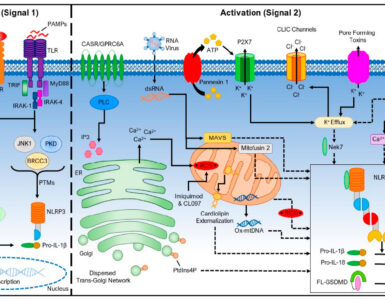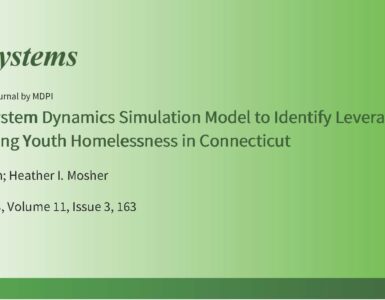Two ICR projects were presented at the second “Innovations in Collaborative Modeling” conference held at the Kellogg Center at Michigan State University in East Lansing, MI. We presented our collaborative approach to modeling the HIV test-and-treat care continuum in Hartford, CT, in which we are examining with community stakeholders factors that affect inter-organizational network ties for service cross-referrals and other factors that affect the HIV epidemic and “community viral load.” We also presented a model developed with the collaboration of institutional and community partners in Mumbai, India, projecting infant morbidity and mortality among women in low-income communities who use smokeless tobacco and illustrating the systemic pro- and anti-tobacco factors contributing to nonlinear patterns of smokeless tobacco use. Both of these projects use participatory system dynamics modeling as a comprehensive collaborative approach to exploring the complex contexts of health risks and change opportunities.
Using System Dynamics Modeling to Identify Strategies that Reduce Community-Level HIV Viral Load
David W. Lounsbury
Albert Einstein College of Medicine
Jianghong Li, Margaret Weeks, and Heather Mosher
Institute for Community Research
The CDC has increasingly promoted test and treat as a promising approach to prevent HIV at the population level by reducing community viral load. Achieving this aim requires implementing and sustaining a well-coordinated continuum of HIV prevention and care services. The current project uses system dynamics to develop and validate a tool to identify and address gaps in the service system for the City of Hartford, CT. The project exemplifies a participatory model-building effort with diverse stakeholders in the HIV prevention and care community (i.e., clinicians, researchers, public health agents, persons living with and at-risk of HIV).
Using Inter-Organizational Network Analysis to Understand City Level Collaboration Effectiveness in Reducing Community HIV Viral Load
Jianghong Li, Danielle Green, and Margaret Weeks
Institute for Community Research
David W. Lounsbury
Albert Einstein College of Medicine
To reduce community viral load as a major HIV prevention strategy, an ongoing study takes a holistic perspective to examine how all HIV service organizations in a mid-sized urban community collaborate to reach maximum overall effectiveness in moving people with HIV rapidly through the test and treat continuum. This presentation illustrates how inter-organizational network analysis, when triangulated with other types of data, can be used to identify existing service gaps, assess potential coordinated service capacity, and inform development of a system dynamics model.
Using SD Modeling to Capacitate Low Income Women’s Smokeless Tobacco Control Advocates
Jean J. Schensul
Institute for Community Research
David Lounsbury
Albert Einstein College of Medicine
Saritha Nair
National Institute of Medical Statistics
In India women’s use of smokeless tobacco (SLT) is a significant health threat, causing oral cancers and perinatal health problems. Despite regulatory actions, women’s use of SLT is increasing. Women recognize many advantages of use. A mixed methods approach utilized in a poor urban community provided data for the development of a formative system dynamics model of factors influencing health outcomes, and raised women’s awareness of SLT risks. This paper presents a simulation model based on study results and demonstrates a methodology for model validation by community women using group modeling building and their empowerment tobacco control advocates through modeling the results of their own intervention strategies.






Add comment